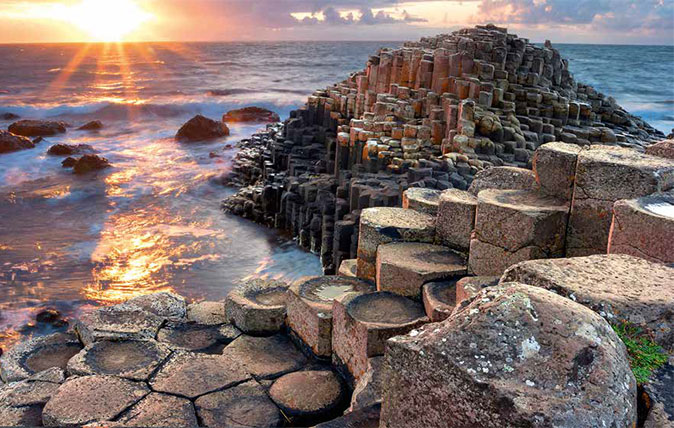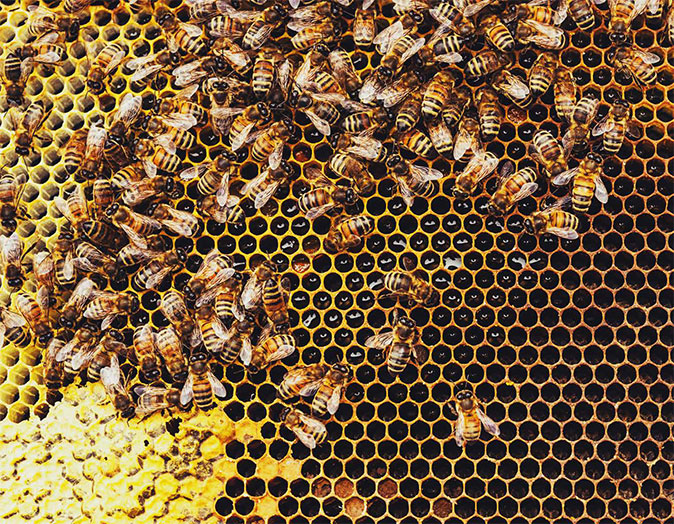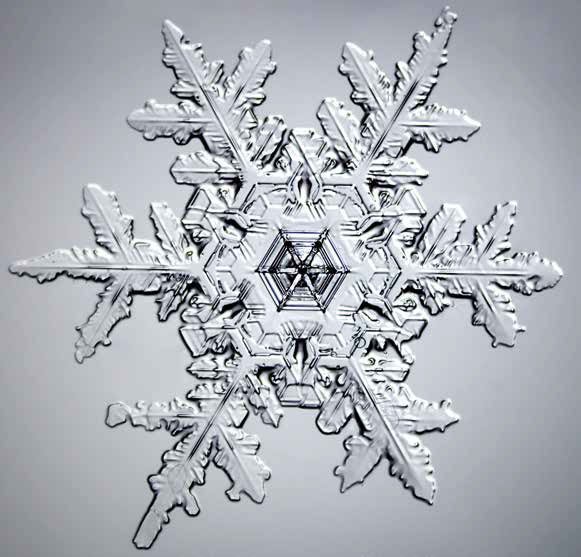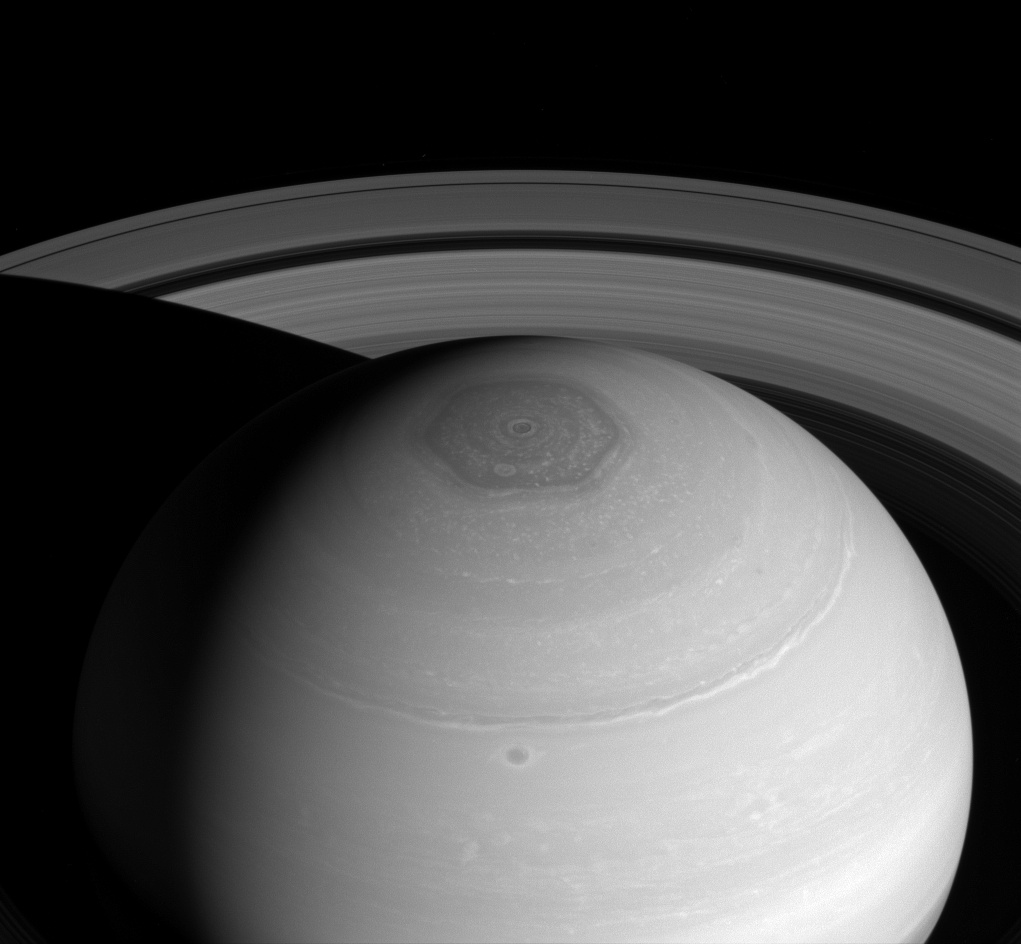Mystery solved: Why nature loves the hexagon, and why without it you'd be a puddle of goo
The hexagon abounds in the natural world. John Wright investigates why.


We expect Nature to be a messy business, eschewing straight lines and simple geometries and consisting only of organic lumps and bumps, random arrangements or simple chaos, yet the resolutely Euclidean hexagon appears with remarkable frequency in the natural world. From the gargantuan to the sub-microscopic, hexagons are everywhere. One wonders why.
It’s all down to efficiency, utility and an occasional ability to form almost inadvertently. The hexagon is symmetrical, simple and enjoys the rare skill of allowing itself to tessellate (tile). Furthermore, as tessellating shapes go, it’s supreme as it can circumscribe the largest area for a given perimeter.
The most familiar natural hexagon is that of the honeycomb. How bees can construct so complex a storage facility has exercised the minds of naturalists for centuries. The Encyclopædia Britannica of 1797 notes that, of the three regular tessellating shapes – equilateral triangle, square and hexagon – the ‘hexagon is the most proper, both for convenience and strength. Bees, as if they knew this, make their cells regular hexagons’.
However, bees, as the writer implies, are not the geometricians they are reputed to be – rather, the honeycomb is the natural result of following some simple rules. Construct beediameter tubes of wax, placing them as closely together as possible. When complete, climb inside and raise your body temperature. The heat softens the cells, which then relax against their neighbours into a hexagonal shape. And that’s it, a strong and efficiently capacious larder-comenursery, made to simple rules.

A similar effect is seen the tubal homes of the honeycomb worm, Sabellaria alveolata. These truly hideous creatures construct their abodes from glued-together sand particles. In low-density populations, they form round tubes. However, if real estate is at a premium, they become tightly packed to form hexagons, creating crumbly, sandy reefs seen on the seashore at low tide.
This tiling pattern is also sometimes found on the skins of fruit. The most striking belongs to that denizen of hotel foyers, the Swiss cheese plant (delightfully, Monstera deliciosa).
It’s the shape of a corn cob and covered with distinct green, hexagonal scales. The deliciosa part of its Latin name, by the way, only applies when the fruit ripens and the scales begin to fall away, as it's fairly toxic until then. Breadfruit shows the same markings.
Sign up for the Country Life Newsletter
Exquisite houses, the beauty of Nature, and how to get the most from your life, straight to your inbox.
Animals also have hexagonal structures. The surface of the extinct coral Cyathophyllum hexagonum is made entirely of hexagons, as are the skeletons of many diatoms. The latter are exquisitely constructed, sometimes forming a flattened sphere, sometimes a tiny triangle, all seemingly made from the finest lace.
Then there are the eyes of dragonflies, made from 30,000 hexagons – and creating a system so complex and powerful that New Scientist referred to their visions as 'ultra-multicolour', adding that it is, "better than anything ever seen in the animal world."

We may be just a little surprised to see so many hexagons in living things, but, in inorganic structures, they are more to be expected. Crystals come in many shapes, reflecting those of their constituent atoms or molecules and how they join hands.
Crystals are molecules writ large. The most well-known crystalline substance is quartz. This form of silicon dioxide takes its shape very seriously – not only is it hexagonal in cross-section, the ends form into six-sided pyramids.
Then there is the snowflake. No other crystal has such flair, such imagination. Famously, no two are ever the same, a piece of apparent hyperbole that is quite true. Nevertheless, they are all, at heart, hexagonal.
Indeed, there are more than a dozen arrangements of water molecules that form different ices (including, for readers of Kurt Vonnegut Jr, the apocalyptic Ice Nine), yet the hexagon dominates. Water molecules have positive and negative charges arranged at just the right angle for six of them to form a hexagon.

Leftover charges enable the hexagons to join to other hexagons edge-on. They can also join face-on, perfectly aligned, thus forming a crystal. I’m hugely simplifying here, but trust me, it’s for the best.
Single snowflakes are mostly symmetrical and always have six corners. They have the same symmetry as a hexagon, but a flurry of snow doesn’t deposit thousands of hexagons on your lawn. Small, young snowflakes, are perfect hexagons, but, soon, the more electrically charged points attract water molecules to produce the Fabergé ornamentations that give them their full beauty.
The snowflake fascinates with its delicate beauty; basalt columns, such as the Giant’s Causeway in Northern Ireland (pictured at the top of the screen) inspire awe. These have also puzzled naturalists over the centuries – the idea that they are enormous crystals quickly being dismissed because they contain small crystals of several minerals.
In fact, the answer is simple – they form by the shrinking of hot basalt as it cools from its molten state, very much like the roughly hexagonal cracking that occurs on your (once snow-covered) lawn after a summer drought. The massive and homogenous nature of the basalt ensures that the forces involved are evenly distributed and the fractures occur with great regularity and in the most economical of forms: the hexagon.

If you think you yourself to be free of hexagons, then I have to tell you that you’re actually largely built of them. Without hexagons, I’m afraid you would be an unpleasant puddle of goo on the carpet. It’s all down to the extraordinarily talented carbon atom.
Six of them join to form hexagonal ‘rings’, sometimes with a carbon atom replaced by that of another element. They’re found in many familiar biochemicals such as vanillin (vanilla), benzene, sugars, amino acids and even DNA. Some sugars have one ring, some two, and are therefore called mono and disaccharides respectively. Some of those in DNA are found in the ‘bases’ that carry the genetic information.
What these rings have in common is that they act as a holder for so-called ‘functional groups’, which are molecular structures attached to the carbon and other atoms on the ring that do the work of the whole molecule.
From the smallest hexagon known, we end with the largest. Discovered only in 1982 by the Voyager mission, ‘the hexagon’, as it is so sensibly known, is a cloud pattern around the north pole of Saturn.
How such a monstrous and unmistakeable hexagon was created and is sustained is a new problem for scientists to worry about, but what is not in doubt is its size: it’s twice the diameter of the Earth.

Country Life is unlike any other magazine: the only glossy weekly on the newsstand and the only magazine that has been guest-edited by HRH The King not once, but twice. It is a celebration of modern rural life and all its diverse joys and pleasures — that was first published in Queen Victoria's Diamond Jubilee year. Our eclectic mixture of witty and informative content — from the most up-to-date property news and commentary and a coveted glimpse inside some of the UK's best houses and gardens, to gardening, the arts and interior design, written by experts in their field — still cannot be found in print or online, anywhere else.
-
 The finest interiors in Edinburgh? A seven-bedroom townhouse furnished by Robert Kime comes to market
The finest interiors in Edinburgh? A seven-bedroom townhouse furnished by Robert Kime comes to marketSituated on one of the New Town's grandest terraces, this four-storey property is a collector's dream.
By James Fisher Published
-
 Why LOEWE decided to reimagine the teapot, 25 great designs over
Why LOEWE decided to reimagine the teapot, 25 great designs overLoewe has commissioned 25 world-leading artists to design a teapot, in time for Salone del Mobile.
By Amie Elizabeth White Published